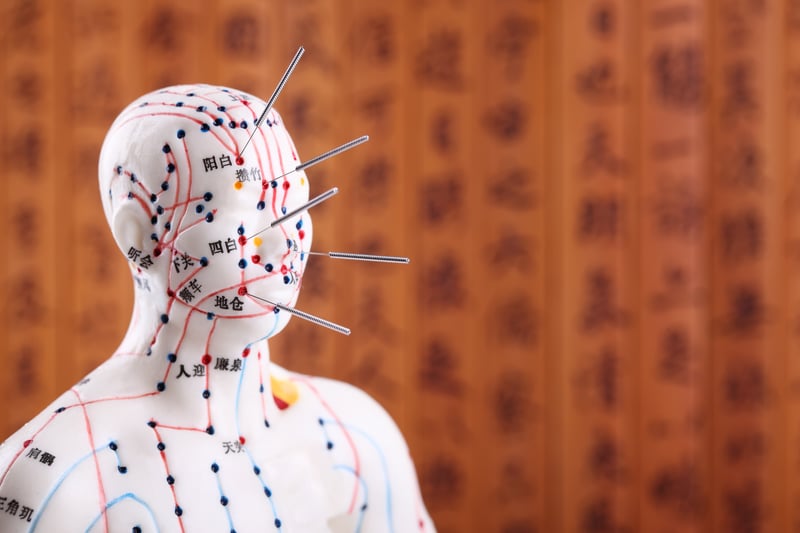For students considering a career in acupuncture and Chinese medicine, it can often be confusing to interpret the landscape of professional licensure for practitioners in the U.S. Though it might seem daunting, developing a clear understanding of the licensure process for acupuncturists before you even begin your studies is an important part of preparing yourself to be successful after graduation.
- State Licensure
Just like other medical professions, licensure for acupuncturists is governed on state-by-state basis. Currently, forty-four U.S. states have laws regulating the practice of acupuncture. In most of these states, the laws governing licensure –such as eligibility, and scope of practice - are overseen by the state’s medical boards. Here in Texas, for example, the Texas State Board of Acupuncture Examiners is responsible for granting licenses to acupuncturists. As a new practitioner, you’ll apply directly to the board in your state for your professional license.
For students entering the field, where they choose to practice can impact their eventual scope of practice. Likewise, the requirements for eligibility and process of applying for licensure may vary from state to state.
If you’re thinking about practicing in a particular state, it’s a good idea to research the scope of practice defined by that state’s regulatory board. You can find a full list of state licensing agencies online.
- National Board Exams
Though licensure itself may be regulated at the state level, there are national standards for the practice of acupuncture & Chinese medicine.
In the U.S., an organization named the National Certification Commission for Acupuncture & Oriental Medicine (NCCAOM), evaluates competency for practitioners seeking to enter the field. The NCCAOM measures competency by administering a set of board exams that, when passed successfully, lead to nationally recognized certification in the following areas: acupuncture, Oriental medicine, Chinese herbs, and Asian bodywork therapy. Of the forty-four states that regulate the practice of acupuncture, all but California require the NCCAOM board certification as a prerequisite for licensure.
As a graduate student in the Master of Acupuncture & Oriental Medicine program, planning for the board exams is important. Students can choose to wait until after completing their degrees to take all of their board exams, or, choose to take each exam upon completion of the corresponding curriculum area. Preparing for the board exams does require extra study-hours, and students within AOMA’s graduate program prepare for the board exams through free board-prep, or “competencies” classes.
Currently, the pass-rate for AOMA students taking the NCCAOM board exams is 91%.
- Professional Title
Just as the scope of practice may vary somewhat from state-to-state, so does the nomenclature used in professional titles. The most commonly used title is “Licensed Acupuncturist” and you might see this listed as L.Ac. or Lic.Ac. Other states, like New Mexico and Nevada, grant the title of “Doctor of Oriental Medicine” (D.O.M.) to practitioners who have completed a master’s degree. Currently the entry-level degree required for obtaining licensure in each state is currently a master’s degree.
In Texas, completing a doctoral degree program in acupuncture in Oriental Medicine, allows practitioners to add the title “Doctor of Oriental Medicine” to their professional names but does not alter their scope of practice.
If this sounds overwhelming, rest assured. The Registrar’s Office and academic advisors at AOMA Graduate School of Integrative Medicine are adept and guiding and assisting graduating students through the process of applying for licensure!
For quick reference, here’s a short overview of the process:
https://magic.piktochart.com/output/6945338-licensure-infographic












 Elizabeth Arris is an advanced student within the Master of Acupuncture & Oriental Medicine program. Prior to relocating to Austin to attend AOMA, she earned a BA in Biological Sciences at Smith College. When not in class, Elizabeth serves as Student Ambassador, administering the InterTransform Mentoring Program for new students.
Elizabeth Arris is an advanced student within the Master of Acupuncture & Oriental Medicine program. Prior to relocating to Austin to attend AOMA, she earned a BA in Biological Sciences at Smith College. When not in class, Elizabeth serves as Student Ambassador, administering the InterTransform Mentoring Program for new students. 




 Justine Meccio
Justine Meccio


 2. Flexibility
2. Flexibility 


 About Kate Wetzel:
About Kate Wetzel:
 Each year, AOMA Graduate School of Integrative Medicine sponsors the Southwest Symposium (SWS) - a premier, 3-day continuing education and integrative medicine conference. The event brings together practitioners, educators, and other health care professionals from the fields of acupuncture & Chinese medicine, massage therapy, and naturopathic medicine.
Each year, AOMA Graduate School of Integrative Medicine sponsors the Southwest Symposium (SWS) - a premier, 3-day continuing education and integrative medicine conference. The event brings together practitioners, educators, and other health care professionals from the fields of acupuncture & Chinese medicine, massage therapy, and naturopathic medicine.
